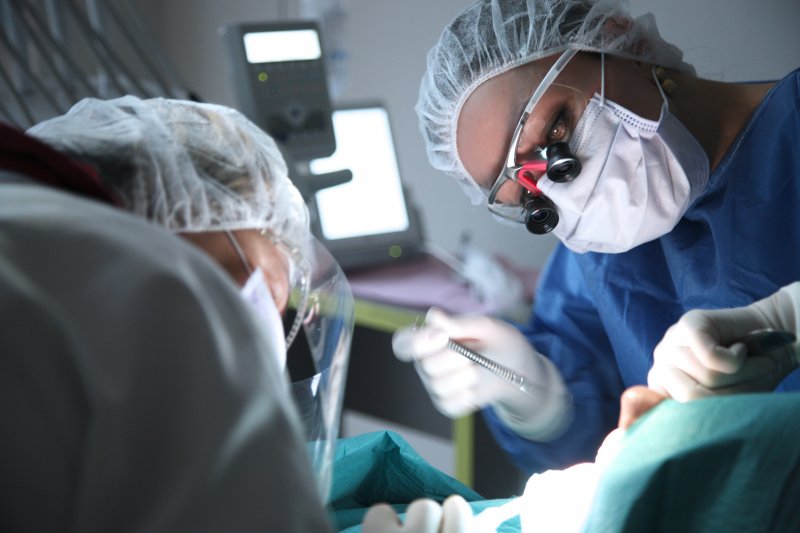
When bacteria and plaque attack the soft oral tissues surrounding teeth, bleeding and inflammation are not the only problems that occur. Gum recession is common among individuals who suffer from periodontal (gum) disease. As the oral tissues pull away from teeth, it causes the roots to become exposed, resulting in an increase of trapped bacteria and worsening oral health conditions. Fortunately, a qualified periodontist can treat this issue with gum disease therapy in Aurora.
Gum Recession and Its Causes
Gum recession can occur for many reasons, including poor oral hygiene, teeth grinding (bruxism), aggressive brushing, genetics, and even foreign materials inside the mouth (i.e., ill-fitting dentures, tongue piercings, etc.).
The most common reason for gum recession, however, is periodontal disease. As the bacteria spread into the gum pockets, they cause the tissues to pull away from teeth and make them appear elongated. Because the roots are exposed, increased sensitivity and infection can occur.
The Reasons for a Gum Graft
Gum grafting is a type of gum disease therapy that involves removing a flap of tissue from the roof of the mouth and repositioning it over the exposed teeth roots. This covers the sensitive areas to minimize the risk of sensitivity and re-infection as well as providing patients with a more aesthetically pleasing smile.
A typical gum graft can take 45 minutes to one hour to complete, but the duration of the procedure can vary depending on the severity of the problem.
Once the periodontist is finished and the local anesthesia wears off, it is normal to experience some soreness. However, pain medication can help to alleviate discomfort, but individuals should plan to follow guidelines provided by their dentist to ensure a successful recovery. This can include:
- Eating soft foods for 1-2 weeks after surgery
- Avoiding brushing or flossing the gum line until it is fully healed
- Rinsing with specialized mouthwash to minimize plaque
Can Gum Problems Develop in the Future?
Patients who do not practice optimal oral hygiene at home after a gum graft may experience problems with their soft oral tissues in the future. To avoid the potential of undergoing this procedure again, regular dental checkups and cleanings, as well as diligent brushing, flossing, and rinsing, are vital. Also, individuals should expect to eat a healthy diet and forgo bad habits to maintain healthy teeth and gums.
Gum disease therapy is safe and effective, but the results are only sustainable if a person commits to caring for their oral health. Patients who want to avoid gum grafting should plan to speak to a dentist to learn what steps are necessary to ensure a healthier smile.
About the Practice
Grand Dental – Aurora is home to a team that prides itself in being able to provide extraordinary personalized dental care. Our in-house periodontist is highly experienced in treating different forms of gum disease, from mild gingivitis to advanced periodontitis. If you have concerns about your periodontal health or would like to schedule an appointment, visit our website or call (630) 538-8302.
